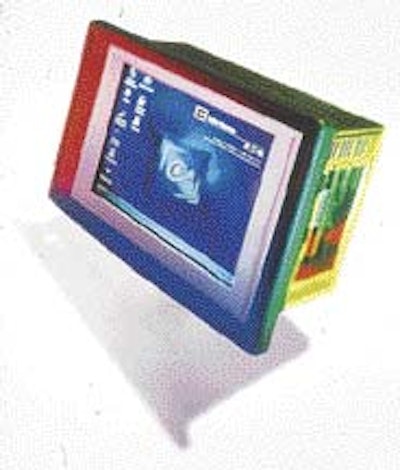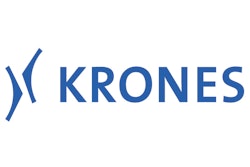
Packaging machines are undergoing two technological shifts. First, the machines are becoming information appliances, plugging into plant or corporate networks to automatically upload packaging line data and automatically download changeover settings. Second, they are being built with a new level of sophisticated motion controls that help achieve the high speed, accuracy and flexibility demanded by today's manufacturers. Less certain is which type of controller is best equipped to carry the technology into the coming century. Will it be the personal computer (PC) or the programmable logic controller (PLC)?
To answer this question, Packaging World singled out a handful of engineering managers representing six packaging machinery builders. Normally, PW restricts its coverage of packaging technology to end-users of such technology. But for machine control, many end-users have no preference, meaning it often is the machinery builders that drive the technology.
"The vast majority of our customers don't care what we're using to control our machine," says Pat Baird, technology manager with Spee-Dee Packaging Machinery (Sturtevant, WI), a manufacturer of auger fillers. "The guy on the line wants to turn on the machine and get it to run. He doesn't care how it runs, or why it runs, he just needs it to run."
Other OEMs confirm Baird's experience. "About 40 percent of our customers specify a controller," says Ed Young, project manager at Ilapak (Newton, PA), which manufactures horizontal overwrappers and vertical form/fill/seal equipment that are typically PC-controlled.
Large companies tend to specify a controller, typically standardizing on a particular manufacturer of PLCs. The response from Rick Stachel, electrical engineering manager at R.A. Jones (Cincinnati, OH), summarizes such customers' thinking: "We have customers who have an interest in PCs, but nobody's really committed," he says.
It's clear that packaging machinery builders will play a major role in determining how pervasive PC controllers become in packaging. The choices they make will have a far-ranging impact on packaging machinery that's used by the smallest companies to the largest.
Framing the debate
Proponents of PC controllers say the devices offer many benefits:
* the ability to combine logic, human-machine interface (HMI) and motion control into one box, simplifying set-up and programming
* lower hardware/software costs
* more processing power
* the ability to easily handle functions such as graphics, network and data acquisition.
Proponents of PLCs often dispute the above assertions. Further, they argue that PLCs offer:
* proven reliability
* industrial-hardened packaging that resists shock, vibration, etc.
* a much larger base of people trained to troubleshoot ladder logic, whether at the end-user, machinery builder or controls supplier level.
Both camps admit that the truth of each of the foregoing points will vary depending on the packaging application. And although each supplier we interviewed had a particular preference for PC or PLC, all have worked with both platforms, and nearly all expressed a willingness to use whatever the customer wants.
The debate begins with one of the most common arguments in favor of PC controllers: One box can handle logic, HMI and motion control.
Dan Winebrenner, electrical engineer at Fogg Filler (Holland, MI), found this argument persuasive enough to start using a PC control on some of Fogg's liquid filling machines (see PW, June '99, p. 58, or packworld.com/go/pc). An all-in-one component "was a big part of what I was looking for. I don't have to buy as many components, and it also saves on installation time," he says.
Further, it's the speed of today's PC controllers that allows them to handle specialized functions such as motion control, in addition to logic and HMI. "The speed of the processing is so much faster," says Ilapak's Young, "that [depending on the application], you can control motion within the PC without having dedicated motion controllers."
However, in a world where machine downtime can cost a manufacturer hundreds or even thousands of dollars per hour, the redundancy of separate components isn't necessarily a bad thing. That's according to Joe Kimbrell, electrical engineering manager at Rovema (Lawrenceville, GA), which makes f/f/s equipment and typically uses PLCs to control them.
"You do have a lot of overhead if you have the PLC and a fairly smart operator interface, plus a motion controller," acknowledges Kimbrell. "But if there's a problem, your three systems are separate." That makes troubleshooting and component replacement faster and easier, according to Kimbrell.
Krones, Inc. (Franklin, WI), which uses both PLCs and PCs, often on the same machine, believes there are technological obstacles standing in the way of the all-in-one control--regardless of whether that control is a PC or PLC. "Right now, hardened industrial motion control systems [for high-end applications] are all multiple distributed control processes," says Mark Oldenburg, electrical R&D supervisor at Krones. Translation: On a packaging machine with many axes of motion control, in addition to a PLC, a separate motion controller might be required, itself containing more than a dozen microprocessors. To pack all of that computing horsepower into an all-in-one control would be all but impossible, contends Oldenburg.
Of course, that's not to say that PC controllers can't be used to control high-speed packaging equipment. "It depends on the type of equipment, the speed and the precision you're talking about," says Ilapak's Young. Ilapak has standardized on PC controls for years. Young says that a single PC is all that's needed for f/f/s machines that can produce up to 1ꯠ packages/min. Beyond that, dedicated motion controller hardware must be added, he admits.
Another argument in favor of the PC, according to Spee-Dee's Baird, is that the PC is more suited to some control tasks than a PLC. "The PC gives us a lot of customization and advanced graphics," he says. PLCs, on the other hand, don't produce graphics; separate operator interfaces that run HMI software are required.
Another advantage: "We can have a couple people up front developing and simulating things on the PC while other people are in back physically building the machine," says Baird. "You don't have to wait for it to be built before you start programming." To be fair, simulating control programs on today's PLCs is certainly possible, Baird admits. "Several years ago [when Spee-Dee was using PC controllers exclusively], I think [simulating PLC logic] would have been harder," he contends.
Baird also feels that PCs are better suited to data acquisition. "Certain customers of ours are certainly getting more into SCADA [Supervisory Control and Data Acquisition]," says Baird. "They're using more information, and each customer wants a certain format. The PC has always helped with that." For high-end applications, of course, PCs can be put on a control network, as can PLCs. But for data acquisition from non-networked machines, it's easy enough, as Baird puts it, to "slap a floppy disk drive on the side of the PC control and bring the data into a spreadsheet."
PLCs 'comfortable'
The one point on which PLC and PC proponents agree is that large end-users tend to prefer PLCs.
"The primary reason why some of these companies stick with a particular manufacturer of PLC is their mechanics are trained on the software for those PLCs," says Ilapak's Young. "If they change [to a controller with a new] language, then they're going to have to retrain people."
"The PLC is universally supported almost everywhere you go," agrees Stachel at R.A. Jones. "Let's say you get a PC controller programmed in C++ or Visual Basic. If you have to make a programming addition or change, you do not have a resource pool that you would for supporting PLCs," says Stachel.
Universal support is especially critical for in-field service. "The support network is there," says Rovema's Kimbrell, referring to affiliate offices or distributors that large PLC manufacturers have in each city. "Our group of service techs don't have to be responsible for troubleshooting the controls of hundreds of machines in the field. We can send programs or modifications to a local office of the PLC manufacturer in whichever city, and those technicians can go over to take care of the problem. They charge us, of course, but it's still a lot cheaper than sending out our service tech on an airplane."
Training in-house people to service PC controls is also a concern to some machine builders. "I would like to do more with PC controls, but I want to avoid falling into the service and support trap," says Kimbrell. "If we have only one or two people who can troubleshoot a PC, those two people will end up doing it for the rest of their careers."
How do PC-using machinery builders respond?
"I guess we chose to take a little bit of a risk on this," admits Fogg's Winebrenner, who recently started specifying off-the-shelf PC control packages. "We were assured by the controls manufacturer that we would get the support that we needed if a problem did arise. And we wanted to be able to take advantage of the technology that's evolving in the last couple of years. So we decided to go ahead and take a shot at it."
Some machinery builders that have been using PC controls haven't found this to be an issue.
"Troubleshooting is a function of how well the diagnostics on the controls are prepared," argues Ilapak's Young. With extensive diagnostics, it is possible to troubleshoot many problems remotely, thus cutting down the need for expensive service calls. He says his firm hasn't found the service and support issue to be problematic with PCs.
Pat Baird at Spee-Dee, a user of PC controllers for years, agrees. "If the customer wants, we'll send them a disk and a couple of cables. They can grab a laptop, or the accountant's computer, connect it, and keep that machine running."
Another concern surrounding PC-based controls is the flip side of its purported strength: the fact that almost every few months, newer and more powerful PCs are available, obsoleting the previous model. The speed of innovation, say many OEMs, is too rapid for the comfort level of many packaging end-users.
"Every time you turn around, technology's going up," says Stachel. "For example, the computer on your desk becomes obsolete about every six to eight months, about the time it gets out into the market."
Adds Krones' Oldenburg: "As [the technology] curve goes up, fewer and fewer people are qualified to deal with [troubleshooting and engineering high-end PC control systems]. Several years ago, customers got left in the dust. A few years ago, OEM field service got left in the dust. And in the last couple of years, large portions of the engineering community got left in the dust. It's a big problem."
Still, the torrid pace of technological advancements in the PC industry has resulted in a lot of processing power for the price, according to Ilapak's Young, more so than on the PLC side, he contends.



























